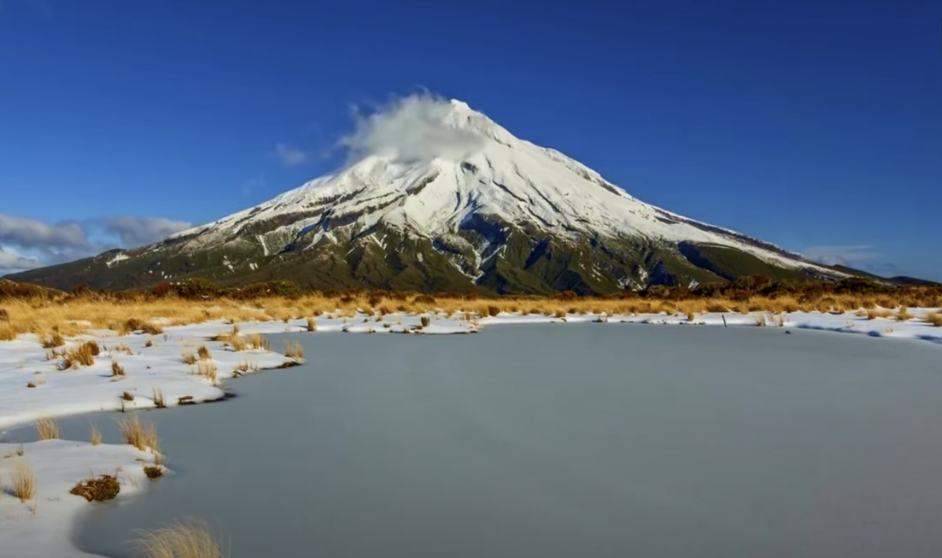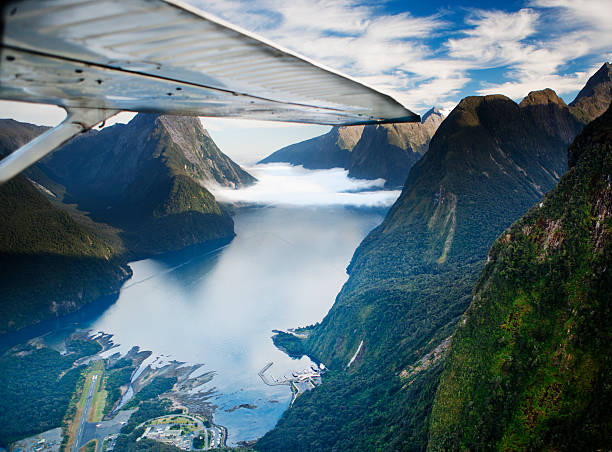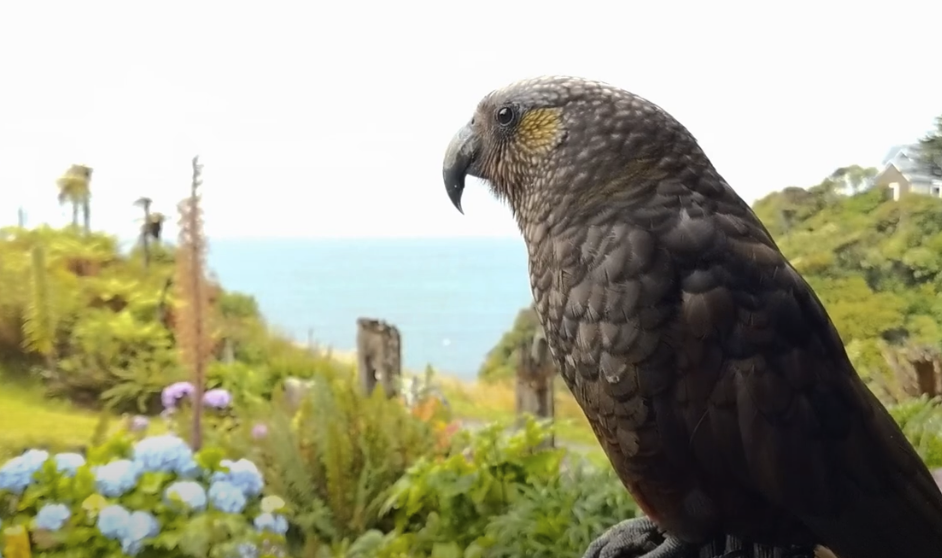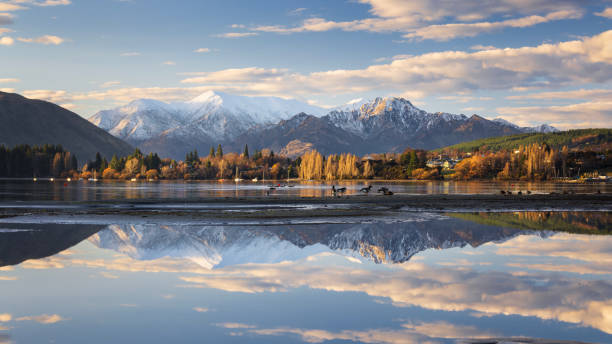New Zealand, a country known for its stunning landscapes and diverse climates, offers unique experiences throughout the year. Deciding the best time to go to New Zealand depends largely on what you want to see and do. This guide will help you identify the best time to visit this breathtaking country, ensuring your trip is everything you’ve dreamed of.
Weather Patterns Across the Seasons
Understanding New Zealand’s seasonal weather variations helps travelers plan their activities and events throughout the year.
Summer (December to February)
During summer in New Zealand, from December to February, the weather is characterized by warm temperatures and a variety of outdoor activities.
- Temperature: Average highs range from 20-25°C (68-77°F), making it the warmest season of the year.
- Activities: It’s the perfect time for beach holidays along New Zealand’s picturesque coastlines, hiking in national parks like Abel Tasman, and engaging in water sports such as kayaking and sailing.
- Key Events: Festivals such as the Rhythm and Vines Music Festival in Gisborne and Auckland Anniversary Day Regattas celebrate music, culture, and maritime traditions.
Autumn (March to May)
Autumn in New Zealand, from March to May, brings cooler temperatures and a vibrant display of autumn colors across the landscape.
- Temperature: Cooler, with temperatures ranging from 17-21°C (62-70°F), creating crisp mornings and mild daytime conditions.
- Activities: It’s an ideal time for wine enthusiasts to explore vineyards in regions like Hawke’s Bay and Marlborough, where the autumn foliage enhances the scenic beauty.
- Key Events: Biennial events such as Warbirds Over Wanaka attract aviation enthusiasts, while the Arrowtown Autumn Festival showcases local culture through parades and performances.
Winter (June to August)
Winter in New Zealand spans from June to August, characterized by colder temperatures and opportunities for snow sports in the Southern Alps.
- Temperature: Colder, averaging between 5-15°C (41-59°F). Mountainous regions like the Southern Alps receive snowfall, transforming into a winter wonderland.
- Activities: Skiing and snowboarding enthusiasts flock to resorts such as Queenstown, Wanaka, and Mt. Hutt, offering excellent facilities and stunning alpine scenery.
- Key Events: The Queenstown Winter Festival celebrates winter sports, music, and local cuisine. Matariki, the Maori New Year, is also observed with cultural performances and community gatherings.
Spring (September to November)
Spring in New Zealand, from September to November, brings warming temperatures and vibrant blossoms across the country.
- Temperature: Gradually warms up from 10-18°C (50-64°F), with blooming flowers and rejuvenated landscapes.
- Activities: It’s an ideal season for visiting botanical gardens, enjoying garden tours such as the Taranaki Garden Festivals, and experiencing lambing season in rural areas.
- Key Events: Festivals like the Alexandra Blossom Festival highlight spring blooms, while regional events celebrate local culture and traditions as New Zealand transitions into warmer weather.
Regional Variations in Climate

New Zealand’s climate exhibits significant regional diversity, influenced by its geographical location and varied landscapes. Understanding these climate variations is crucial for planning activities such as agriculture, tourism, and outdoor recreation.
North Island
The North Island of New Zealand features a predominantly subtropical climate in its northern regions, such as the Bay of Islands. Key characteristics include:
- Winters: Generally mild with temperatures rarely dropping below 10°C (50°F).
- Summers: Warm and humid, with temperatures often reaching 25-30°C (77-86°F).
- Rainfall: Moderate to high rainfall throughout the year, contributing to lush vegetation and agricultural productivity.
- Sunshine: Generally abundant sunshine, particularly in coastal areas, supporting a thriving tourism industry focused on beach activities and outdoor adventures.
South Island
The South Island experiences more pronounced seasonal variations compared to the North Island. Here are some notable features:
- Winters: Colder, especially in inland areas like Central Otago, where temperatures can drop below freezing. Snowfall is common in higher altitudes.
- Summers: Warmer than the North Island’s inland areas, particularly along the coasts such as Nelson.
- Rainfall: Varies significantly by region; the west coast receives more rainfall due to prevailing westerly winds, while the east coast tends to be drier.
- Sunshine: Coastal areas like Nelson enjoy relatively high sunshine hours, making them popular destinations for sun-seekers and outdoor enthusiasts.
Peak and Off-Peak Seasons
Understanding the seasonal variations in New Zealand can greatly enhance travel planning and tourism experiences. Here’s a comprehensive look at peak and off-peak seasons:
Peak Season
During New Zealand’s peak season, which spans from December to February, the country experiences its bustling summer months. This period aligns with school holidays, both locally and internationally, drawing a large influx of tourists seeking to enjoy the warm weather and vibrant outdoor activities.
- Accommodations and Activities: Demand for accommodations and activities peaks during this time. It’s advisable to book well in advance to secure preferred options and avoid higher prices.
- Weather: Across the country, temperatures are warm and conducive to outdoor pursuits such as hiking, beach visits, and water sports.
- Tourist Hotspots: Popular destinations like Auckland, Queenstown, and the Bay of Islands buzz with activity, offering a lively atmosphere and full service availability.
Off-Peak Season
From May to September, New Zealand enters its off-peak season characterized by cooler temperatures and fewer international tourists. This quieter period presents unique opportunities for travelers looking to explore the country at a more relaxed pace.
- Lower Prices: Accommodation and activity prices generally decrease, providing budget-friendly options for travelers.
- Weather: Expect cooler temperatures, especially in the South Island and higher altitudes, with occasional snowfall in mountainous regions.
- Attraction Availability: Some attractions, particularly in remote areas or weather-dependent locations, may have reduced operating hours or be closed entirely. It’s advisable to check ahead if visiting specific sites is a priority.
Costs of Visiting New Zealand

Visiting New Zealand entails varying costs depending on the time of year, with significant differences between summer and winter:
Summer
Summer in New Zealand spans from December to February, characterized by warm weather and peak tourism activity:
- Flights: During the summer peak season, flights to New Zealand can be more expensive, especially if booked closer to travel dates. It’s advisable to book flights well in advance to secure better rates.
- Accommodation: Accommodation costs tend to rise, particularly in popular tourist destinations like Auckland, Queenstown, and the Bay of Islands. Options range from luxury resorts to budget hostels, catering to diverse traveler preferences.
- Daily Expenses: Budgeting around NZ$200 per day is reasonable for summer travel. This budget covers expenses such as meals, transportation, entrance fees to attractions, and incidental costs.
Winter
Winter in New Zealand runs from June to August, offering a different travel experience with unique cost considerations:
- Flights: Flight prices may be more competitive compared to summer, especially for travelers flexible with their travel dates. Off-peak travel can yield savings on airfare.
- Accommodation: While overall costs may decrease compared to summer, popular ski resort areas like Queenstown can be more expensive due to high demand from skiers and snowboarders. Off-peak rates outside of these areas may offer more budget-friendly options.
- Daily Expenses: Budgeting around NZ$150 per day is advisable for winter travel. This budget accounts for reduced activity costs and potentially lower accommodation rates outside of peak ski season.
Best Time for Adventure Sports
For adrenaline junkies, here’s when you should visit:
Skydiving and Bungee Jumping
For thrill-seekers visiting New Zealand, skydiving and bungee jumping offer exhilarating experiences that can be enjoyed year-round in various iconic locations such as Queenstown and Taupo.
- Year-Round Availability: Both skydiving and bungee jumping are accessible throughout the year, ensuring adrenaline junkies can indulge their passion regardless of the season.
- Optimal Season: Summer, spanning from December to February, stands out as the preferred time for these activities due to clearer skies and better visibility. The panoramic views during freefall or from the bungee platform are unparalleled, making the experience even more breathtaking.
- Weather Considerations: Warmer temperatures during summer not only enhance comfort but also add to the overall thrill of the adventure, creating a memorable experience for participants.
Skiing and Snowboarding
Winter sports enthusiasts flock to New Zealand’s Southern Alps from June to early September, drawn by the promise of world-class skiing and snowboarding conditions.
- Prime Locations: The Southern Alps boast renowned ski resorts such as Queenstown, Wanaka, and Methven, each offering diverse terrain suitable for all skill levels.
- Snow Conditions: Winter months bring reliable snowfall, ensuring excellent coverage and optimal conditions for skiing and snowboarding activities.
- Facilities: Modern facilities and services cater to the needs of winter sports enthusiasts, including equipment rentals, ski schools, and après-ski amenities.
Water Sports
During the warmer months of December to March, New Zealand’s coastal regions and lakes become playgrounds for water sports enthusiasts seeking aquatic adventures.
- Ideal Period: Summer provides the warmest waters, perfect for engaging in a variety of water activities such as kayaking, sailing, and paddleboarding.
- Scenic Beauty: Locations like the Bay of Islands and Abel Tasman National Park offer stunning natural landscapes that enhance the enjoyment of water sports.
- Activity Diversity: Whether exploring secluded coves by kayak or harnessing the wind for sailing adventures, the options for water sports are abundant and cater to all levels of experience.
Cultural and Wildlife Experiences

To fully immerse yourself in New Zealand’s culture and natural beauty, consider these timings:
Cultural Festivals
New Zealand hosts several cultural festivals that provide insights into its diverse heritage and traditions:
- Waitangi Day (February): Celebrated on February 6th, Waitangi Day commemorates the signing of the Treaty of Waitangi in 1840, marking New Zealand’s founding document. Festivities include cultural performances, traditional food, and ceremonies held at Waitangi in the Bay of Islands and across the country.
- Matariki (Maori New Year in June): Matariki, also known as the Maori New Year, is celebrated in June when the Matariki star cluster (Pleiades) rises in the sky. It is a time for reflection, storytelling, and cultural rituals, with events such as feasts, art exhibitions, and performances showcasing Maori culture.
Wildlife Watching
New Zealand’s diverse ecosystems offer unique opportunities for wildlife enthusiasts to observe native species in their natural habitats:
- Dolphins: Summer (December to February) is the ideal time to see dolphins along New Zealand’s coastlines. Popular spots include the Bay of Islands, where bottlenose and common dolphins can often be spotted playing in the clear waters.
- Whales: Winter (June to August) is prime whale-watching season in New Zealand. Species such as humpback whales, southern right whales, and orcas migrate through New Zealand waters during this time, particularly along the coasts of Kaikoura and the Bay of Plenty.
- Kiwi Birds: Kiwi birds, New Zealand’s iconic flightless birds, are best observed during the darker nights of winter months (June to August). Guided nocturnal tours in regions like Rotorua, Stewart Island, and the West Coast offer opportunities to see these elusive birds in their natural forest habitats.
Travel Tips for First-Timers
For travelers planning their first trip to New Zealand, these tips ensure a smooth and enjoyable experience while navigating the country’s unique landscapes and cultural offerings.
Travel Insurance
For travelers visiting New Zealand, securing comprehensive travel insurance is essential to ensure peace of mind and protection against unforeseen circumstances.
- Importance: Travel insurance covers medical emergencies, trip cancellations, and lost luggage, providing financial security during your trip.
- Coverage Details: Verify that your insurance includes medical expenses, emergency evacuation, and coverage for adventure activities such as bungee jumping or skiing.
- Policy Review: Familiarize yourself with the terms and conditions of your insurance policy to understand coverage limits, claims procedures, and emergency contact information.
Driving
Navigating New Zealand’s roads requires awareness of local driving rules and conditions, ensuring safe and enjoyable travel experiences for all road users.
- Left-Side Driving: In New Zealand, vehicles drive on the left side of the road. Pay attention to road signs and adapt to left-side traffic flow, especially at intersections and roundabouts.
- Road Conditions: Be prepared for varied road conditions, from well-maintained highways to narrow, winding roads in rural and mountainous areas.
- License Requirements: Carry a valid driver’s license recognized in New Zealand. International driving permits are recommended for drivers with non-English licenses.
Connectivity
While New Zealand offers modern amenities in urban areas, travelers should be mindful of connectivity variations between major cities and remote regions.
- Urban Areas: Cities like Auckland, Wellington, and Christchurch provide reliable mobile network coverage and access to Wi-Fi in accommodations and public spaces.
- Remote Areas: Plan for limited or no mobile network coverage in remote or rural areas, including national parks and coastal regions. Consider offline maps and communication alternatives.
- Preparation: Download essential apps and maps before traveling to remote areas to navigate without relying on real-time internet access.
Biosecurity Laws
New Zealand maintains stringent biosecurity laws to protect its unique environment and agriculture from invasive species and diseases.
- Regulations: Familiarize yourself with prohibited items, including fresh fruits, vegetables, untreated wooden products, and animal products. Declare any items that may pose a biosecurity risk upon entry.
- Declaration Process: Complete an accurate customs declaration upon arrival at New Zealand airports, disclosing all items of concern to avoid fines or penalties.
- Quarantine Procedures: Understand the quarantine process for declared items to comply with biosecurity regulations and contribute to preserving New Zealand’s natural ecosystem.
Conclusion
Choosing the best time to go to New Zealand depends largely on your interests and what experiences you want to prioritize. Whether you’re after a snow-capped mountain adventure or sunny beach days, every season in New Zealand has something spectacular to offer.
FAQ
A1: Generally, May and June see lower airfare prices.
A2: Absolutely, although some remote attractions might be inaccessible due to weather, especially in winter.
A3: Ideally, book 3-6 months in advance, especially if planning to visit during the peak season.
A4: Don’t miss Milford Sound, Rotorua for its geothermal wonders, and Queenstown for adventure sports.
